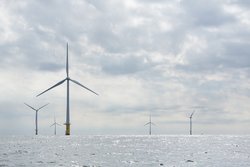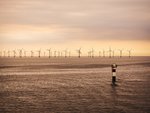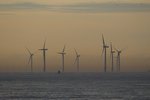News Release from The Crown Estate
Wind Industry Profile of
The Crown Estate invests a further £9m in new research to drive nature-positive offshore wind development
Subject to contracts, The Crown Estate will provide a total investment of £9 million through the Offshore Wind Evidence and Change programme (OWEC), which it co-leads alongside the Department of Energy Security and Net Zero and the Department for Environment, Food and Rural Affairs.
The projects aim to fill critical evidence gaps around how seabirds interact with offshore windfarms and how strategic compensation measures could support seabird colonies, habitat restoration and creation. Led by the Offshore Wind Industry Council (OWIC), the Carbon Trust, the Joint Nature Conservation Committee (JNCC), and Natural England, they will be delivered and supported by many other public, private and charitable organisations and are due to begin work over the coming months.
Together with other projects funded by the Offshore Wind Evidence and Change programme, they will improve understanding of the impact offshore wind has on marine wildlife around the UK, with the aim of ensuring ongoing development can provide long term biodiversity gain while helping to deliver on net zero commitments.
The programme is part of The Crown Estate’s broader commitment to work in partnership with a wide range of organisations that have a role to play offshore to ensure that the UK’s increasingly busy sea space can continue to catalyse home grown clean energy for all, jobs and investment for communities and a considerate, sustainable approach which respects the nation’s rich marine biodiversity.
Gus Jaspert, Managing Director of Marine at The Crown Estate, said: “More demands are being placed on the seabed than ever before. It is a key component of the UK’s renewable energy system, a route to energy security and home to a thriving marine environment. To enable these multiple priorities to prosper in a sustainable way, we’re continuing to invest and work closely with the brightest and best minds to fill critical knowledge gaps, in turn helping to de-risk and accelerate nature-positive offshore wind development. That is why we have committed up to £50 million in the Offshore Wind Evidence and Change programme as part of our wider work to build data and evidence that informs how the seabed can sustain its extraordinary variety of industries, livelihoods and natural habitats for the long-term benefit of the nation.”
The four projects are:
Prevalence of Seabird Species and Collision Events in OWF (PrediCtOr), led by the Carbon Trust under the Offshore Renewables Joint Industry Programme (ORJIP)
- The PrediCtOr project aims to develop a coordinated approach for reducing uncertainty surrounding bird collision risk and influencing factors, and therefore reducing consenting risk, at offshore wind farms. This will be achieved by:
- Developing a robust data framework that will allow the integration and combined analysis of datasets from past and future collision monitoring campaigns.
- Establishing best practice guidance on the use of monitoring technologies, equipment installation offshore and data handling as well as recommendations for future study designs best suited to monitoring seabird behaviour around offshore wind farms.
- Conducting an onshore field study to understand biases and limitations of monitoring equipment from various suppliers.
- Bethany White, Project Manager of the PrediCtOr project, The Carbon Trust said ‘Recent bird collision monitoring campaigns in offshore wind farms have shown very low numbers of collisions. However, this isn’t reflected in estimates derived from collision risk modelling, which are used to inform consenting decisions. A more robust evidence base is needed to address the remaining uncertainties. This requires a harmonised and co-ordinated approach that allows the industry to increase the accuracy of collision risk estimates. We are excited to be collaborating with our research partners British Trust for Ornithology (BTO) and Waardenburg Ecology on the PrediCtOr project, alongside a wide range of other leading industry experts.
Procellariiform Behaviour & Demographics (ProcBe), led by JNCC
- ProcBe seeks to fill critical evidence gaps around how seabird species, such as storm petrels and Manx shearwater - might interact with offshore wind farms and improve demographic rate and population modelling approaches. This will help to improve confidence in offshore wind impact assessments and allow expansion of floating offshore wind in the Celtic and Irish Seas and the west coast of Scotland in a sustainable way.
- Dave Stone, Chief Scientist, JNCC said, “JNCC is thrilled to be leading this exciting project that has the potential to make significant advances in our understanding of some of the UK’s most important seabirds. The interactions between Procellariiform species (shearwaters and storm-petrels) and offshore wind developments are poorly understood, addressing critical knowledge gaps should help the UK to meet its dual ambitions for achieving Net Zero and nature recovery.”
Reducing Seabird Collisions Using Evidence (ReSCUE), led by Natural England
- This three-and-a-half-year project will improve our knowledge of seabird flight heights and collision risk with offshore wind turbines in UK waters. This will reduce consenting risk for new offshore wind projects and, where needed, inform effective mitigation to aid the nature-friendly expansion of the offshore wind industry.
- Dr Tim Hill, Chief Scientist, Natural England said, “At Natural England, our mission is to Build Partnerships for Nature’s Recovery, which is reflected in our work with a wide range of stakeholders to protect and restore habitats, species and landscapes. Protecting seabirds from collisions with offshore windfarms is one such partnership and we are delighted to receive this investment as it will allow us to bridge gaps in the evidence base around seabird flight heights and risk of collision, using innovative methods and technologies. An enhanced evidence-base will bring greater confidence in our actions to protect some of our most vulnerable species whilst also providing increased certainty for the design and operation of windfarms”.
Strategic Compensations Pilots for Offshore Wind, led by OWIC
- As welcomed by Minister Stuart at the Global Offshore Wind 2023, this project will deliver a shared body of evidence on best-practice, research and practical pilot projects for offshore wind compensation spanning investment in four target measures:
- Artificial nesting for seabirds – increasing the evidence bases, including onshore or offshore structure and opportunities for re-use of oil and gas platforms.
- Habitat restoration and creation
- Predation reduction – this can involve exclusion zones around protected seabird colonies and biosecurity programmes to improve seabird breeding success
- Removal of defunct infrastructure
- Kat Route-Stephens, Strategic Compensation Programme Manager at OWIC, said: “We’re really pleased to see strategic compensation pilots for offshore wind now officially going forward. Our pilot projects aim to give the offshore wind sector and stakeholders tools and evidence to improve environmental outcomes and reduce uncertainties, as we roll out the renewable capacity demanded by our climate and energy security crises.
Our project will work closely with the Collaboration in Offshore wind Strategic Compensation (COWSC) initiative, which brings together industry, environmental NGOS, SNCBs, the UK Government and Devolved administrations and other relevant stakeholders – sharing a common purpose of finding strategic compensation solutions that enable the required build out of offshore wind, while respecting our precious marine ecosystems.”
Data and evidence captured by these and other projects will be freely accessible on The Crown Estate’s Marine Data Exchange (MDE), the world’s largest database of offshore renewables survey data, research and evidence. Sharing this data and evidence through the MDE, along with high quality data from thousands of offshore industry surveys, gives those involved in planning offshore projects a valuable head start in understanding key consenting and planning challenges and potential interactions and impacts, which could ultimately lower the risk of offshore development and accelerate sustainable development.
- Source:
- The Crown Estate
- Author:
- Press Office
- Link:
- www.thecrownestate.co.uk/...
- Keywords:
- The Crown Estate, investment, nature positive, offshore, wind farm, development, UK, OWEC, OWIC, conservation





















